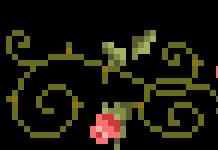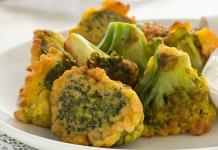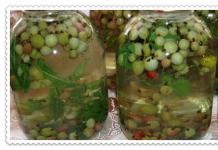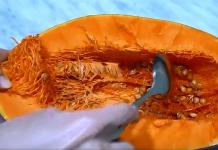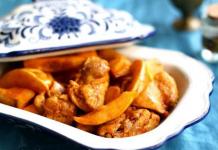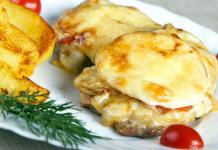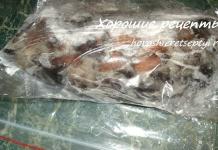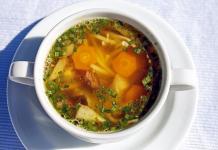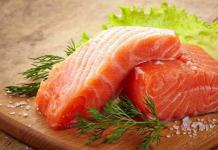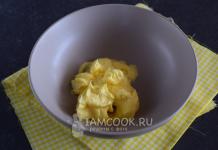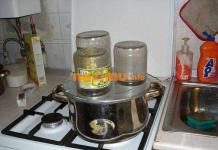Project work
All about onions
Completed:
grade 1A students
MKOU "Zalininskaya secondary school".
Project Manager:
primary teacher
Davydova N.A.
2016year
Content
Preparatory stage.
Identifying the problem. Setting goals and objectives.
Relevance
Planned result.
The main stages of work:
The main stage. (research)
Where did you come fromonion
Basic information about onions.
Variety of onions
The healing properties of onions
Onion.
Proverbs, sayings, riddles, poems, fairy tales.
The final stage.
Output. Summarizing.
Bibliography.
Application.
Presentation
Folder "Dishes from onions."
Folder "Medicines from onions"
I .1 Identifying the problem. Setting goals and objectives.
In winter and spring, people often get colds. In February of this year, we had a quarantine at school: our class did not study for more than a week due to the fact that most of the children fell ill. How could this have been avoided? It was possible to do prophylaxis, for example, eat green onions.
This winter we wanted to grow green onions in our class. For our work, we have chosen a goal: to try to grow green onions on our own, find out and collect information about this plant, collect interesting facts, proverbs, sayings and much more about onions. We took the bulbs and put them in boxes filled with sawdust. The boxes were placed closer to daylight. The very next day, small green feathers began to appear. They have grown. This is how we managed to grow green onions in our class for the first time.
We became interested in what the onion is useful for, why people love it so much. To answer these questions, we looked for information on the Internet and encyclopedias, asked adults. We made thiswork plan .
Collect information about the origin of the onion, its diversity.
Learn about the healing properties of onions.
Collect riddles, proverbs, sayings, poems, fairy tales about onions.
Collect onion recipes.
Find out what diseases and how you can cure with the help of onions.
2. Relevance
The project is aimed at expanding and generalizing knowledge about cultivated garden plants, how to care for plants, and understanding the importance of vegetables in human life. Every year, many children see their parents plant onions, harvest them in autumn, and use them for various purposes. But we have never thought: how does an onion grow, what conditions are necessary for its growth? And how is it useful? When carrying out joint activities - planting onions, all the children showed a desire to help, plant them themselves. An idea arose to implement the All About Onion project, and invite the children together with the teacher to plant an onion, observe how and how quickly it will grow into a feather.
3. Planned result.
1. Children will learn to plant and care for onions and get acquainted with the conditions of its cultivation, learn about the benefits of onions.
2. Children will get acquainted with literary works about onions, with how onions are used in cooking and medicine.
4. The main stages of work:
STAGE 1 - preparatory.
Place the onions in containers. Collect riddles, proverbs, sayings, poems, fairy tales about onions. Collect culinary and medical recipes with onions.
STAGE 2 - main (research).
Monitor the growth of the onion, conduct experiments. Establish connections: plants - earth, plants - water, plants - people. In the process of research, acquaint children with fiction about onions: sayings, poems, fairy tales, riddles. Conduct classes, conversations.
STAGE 3 - final.
Analyze and summarize the results obtained in the process of research activities of children.
To arrange an exhibition of drawings about onions, hand-made articles from onions.
II .Main stage. (research)
1. Basic information about onions.
Onion- and herbaceous plants belonging to the subfamily ... Scientific Latin name was given , comes from the Latin name , and this, in turn, is probably associated with the Celtic word- burning ; another version - comes fromLatin word-smell .
There are more than 900 species in the genus that grow in ... Representatives of the genus grow in meadows, steppes, forests.
Representatives of the genus have a large flattened-spherical, covered with reddish, white or purple membranes. Perennial (cultivated species are sometimes biennial) bulbous or with almost undeveloped bulbs herbaceous plants, have a sharp onion (or garlic) odor and taste
Blooms in June-August.
Seeds are angular or round. Fruiting in August-September.
Chemical composition.
Bulbs contain nitrogenous substances (up to 2.5%), various(10-11%) (,,,),,, and it,, various, salts and,, and, A (3.75 mg%), (60 mg%), (50 mg%), (0, 20 mg%), (10.5-33 mg%), and with a pungent special odor, irritating and nose. The main constituent of the essential oil is disulfide and other sulfides, the main part of which, en C 6 H 12 S 2, contains a lot.
2. Where did you come from? onion
Onion - one of the most ancient vegetable plants. It has been cultivated for five millennia. Onions are known all over the world, and they came to us from Asia, where ordinary shepherds were the first to eat onions. At first it was believed that only green shoots can be eaten, but over time, vegetable bulbs were also consumed.Onion cultivation began in ancient China and then spread to India. At that time, trade was actively developing, so the onion migrated to Egypt, where it became simply a cult plant, as evidenced by numerous frescoes and sculptures.The remains of an onion were found by archaeologists inEgyptian pyramids, and on the sarcophagi and walls of buildings - a variety of his images. Since time onions have been brought to Greece, where they are considered to be a cure for all diseases. The warriors of Ancient Greece anointed their muscles with onions before important competitions, believing that the bow would become their reliable assistant. In Rome, onions were actively used for intestinal problems.
Since olden times, onions have been grown and cultivated in Russia.Old Russian cuisine widely used onions for cooking and seasoning from it. Foreign travelers and diplomats who were in Russia noted that the majority of Rusyns consume such spicy dishes that it is impossible to eat them. Onions became the staple food of commoners in Russia. Bread and kvass and raw onions are the main foodstuffs for peasants, artisans, and soldiers. The people, of course, could not know in those days about the phytoncidal properties of onions, which have a beneficial effect on increasing the body's immunity, its resistance to diseases. In one old Russian herbalist there is such a description of the healing properties of onions: “It pleasantly softens the womb, but induces thirst and destroys the stinking spirit from the mouth ... when taken internally, it works excellently for weak stomach and poor digestion, convulsions of hysterical women, mucous and convulsive shortness of breath, water and stone disease. During the prevailing infectious diseases, it is very useful to add onions to breakfast food, to make soups from onions with the addition of salt, pepper, and a little vinegar. "
3. Variety of onions.
There are also sweeter varieties, such as Spanishand red onions are great for use in
salads.
SHALOT

Shallot has a delicate sweetish aroma and
is a source of the same vitamins as onions
onion.
GARLIC
Garlic heads have a white, almost papery
husk, sometimes with a pinkish or purple tint.
LEEK

Leek tastes more delicate thanonion
and garlic
GREEN ONION

Green onions or salad onions are unripe onion
onion with an underdeveloped bulb, it is harvested when
the green feathers are still quite fresh.
SHNITT BOW
Chives or chives are a fragrant herb with
tiny onions, eaten only
green feathers. Their purple-pink flowers too
edible and nicely decorate salads.
4.Healing properties of onions
Onions have long been considered a powerful remedy for disease.In ancient Greece, according to the ancient Roman physician Pedanius Dioscorides, onions were recommended for stimulating appetite and “as a cleansing agent”. The Romans and Greeks attributed to the bow the ability to excite inexhaustible vitality, energy, courage and used it in large quantities in the food of warriors.
The healing properties of onions were also known in the countries of the Ancient East., where they said: "Bow, in your arms every ailment passes." Ancient slavsused it for many diseases, and in the years of severe epidemics in the huts they hung bundles of onions. "Onion from seven ailments" - said the Russian proverb.
During the Middle Ages, the bow was so popular and so people believed in its healing and protective power that they used it as a talisman capable of protecting from an evil eye, the spell of a sorceress, arrows, wounds with a sword, spear, halberd. Knights, clad in impenetrable metal armor, wore an onion on their chests.In the Middle Ages, people believed in the ability of the bow to protect against arrows and swords. Medieval knights wore a simple onion on their chest as a talisman.
Nowadays, scientists have discovered that onion volatiles are phytoncides - are detrimental to many pathogenic and putrefactive bacteria.The discovery of phytoncides belongs to the famous researcher Academician B.N.Tokin. It was he who first noticed that the volatile substances of pounded onions have a detrimental effect on yeast cells. Many scientists are now working to develop a kind of onion that does not cause tears. But the fact is that this special taste and smell of onions has a beneficial effect on the human body. So onions that do not cause tears will have a completely different taste and smell. It has been noticed that people working in greenhouses, where green onions are grown all year round, rarely get colds and flu, even during the most severe epidemics.
It is known that chewing onions for three minutes is enough to kill all bacteria in the mouth. It is also recommended to eat raw onions for vitamin deficiencies and for the prevention of influenza. Greens of onions contain many useful substances, especially vitamin C. 100 g of green onions will satisfy a person's daily need for this vitamin. Fresh onion improves digestion and improves nutrient absorption. Two centuries ago, onions were used in the treatment of typhoid, flu, scurvy, decreased vision, impotence and other diseases, as well as wounds, burns, and hair loss.
5. about onions.
Onion (Allium) is a genus of biennial and perennial plants belonging to the subfamily
Onions.
The Latin scientific name - allium - was given by Karl Linnaeus and comes from the Latin name for garlic, and it, in turn, according to one version, is associated with the Celtic word all - burning; another version derives the name from the Latin halare - to smell.
In the genus Onion there are more than 900 species that grow in the Northern Hemisphere.
Representatives of the genus grow in the steppe, meadows, and forests.
228 types of onions are vegetables.
It is difficult to establish the homeland of the bow. Most researchers believe that the bow
comes from Southwest Asia.
There are very ancient - from the Bronze Age - evidence of the use of onions in Europe.
The Babylonian collection at Yale University contains three small clay tablets, which are the first cookbooks we know of. They describe "a culinary tradition that is striking in its richness, grace and craftsmanship," with many of the aromas and flavors that are familiar to us today. It turned out that in Ancient Mesopotamia the whole onion family was simply adored. The Mesopotamians widely used not only common onions, but also leeks, garlic and shallots.
The onions and garlic were known as early as 3000 BC. NS. The historian Herodotus, who lived in Ancient Greece 2500 years ago, noted that there was an inscription on how much garlic and onions were consumed as food for the workers. It read: "1600 talans of silver were spent on onions and food for the slaves."
Archaeologists found an image of a bow on the tomb of Tutankhamun, dating back to 1352 BC. NS.
It is known that 5000 years ago, onions were grown in,.
The bow was necessarily included in the provisions of noble knights in the Middle Ages, during the Crusades. The French exchanged their captive compatriots with the Saracens, paying eight onions per person.
The onion came to America thanks to the expedition of Christopher Columbus, at first it was planted on Isabella Island, and then spread throughout the mainland.
If we calculate the consumption of onions per capita, then Libya becomes the world champion, where, according to the UN, the average citizen eats more than 33 kg of onions per year. “We add onions to everything,” say the Libyans. In second place is Senegal, whose inhabitants consume on average about 22 kg of onions per year. Residents eat somewhere around 9.3 kg per person per year. But the residents, whom the British traditionally consider "onion eaters", actually cost a modest 5.6 kg per person.
In India, no meal is complete without onions. Fluctuations in the cost of an onion are noticeable to every ordinary person. The political weight of onions is due to the fact that this vegetable is an integral part of the life of almost every Indian home. Perhaps the most significant case of this kind was in 1998, when analysts linked the defeat of the ruling BJP in the Delhi elections to a rise in the price of onions.
The widespread onion got its name from its external resemblance to.
The leek is one of the national symbols of Wales. In the 6th century, according to legend, the bishop and educator David of Welsh, during the battle against the Saxons, which took place on the onion field, urged his soldiers to attach leeks to their helmets to distinguish their comrades-in-arms from enemies. Therefore, on March 1 every year, the people of Wales celebrate a national holiday - St. David's Day.
Onions contain more natural sugar than apples and pears. Onion wedges contain 6% sugar. When browning, when caustic substances have evaporated, the onions become sweet.
Onions are a great fat burner. There is even a special onion diet, during which you need to consume onion soup.
People say that onions are from seven ailments. It has been noticed that people working in the greenhouse where green onions are grown, even during the most severe epidemics, do not get the flu.
The onion serves as a pain reliever for the bite, and. To do this, you need to immediately rub onion juice into the bite site.
It is scientifically proven that substances that cause the taste, smell and tears from onion processing can fight cancer cells.
Riddle: "A grandfather is sitting, dressed in a hundred fur coats, who undresses him sheds tears." The reason for this tearing onion lies in a special substance - lacrimator (from the Latin lacrima - tear). When the onion is cut, the lacrimator is released and dissolves in water and, in particular, in human tears. This produces sulfuric acid, which irritates the mucous membrane of the eye. And now it is clear why the onion is peeled by wetting it or a knife with water - the lacrimator dissolves in water and practically does not escape into the air. If the onion is frozen before peeling, then the activity of the lacrimator also sharply decreases.
Onions improve appetite, assimilation of food, increases the body's resistance to infectious diseases.
Onions have bactericidal and antiseptic properties, fight viruses and accumulate the life-giving energy of the earth.
Onions can be used to treat bites. To do this, simply attach a chopped onion to the bite. It will draw out poison, reduce swelling and speed up skin healing.
Onion juice is a highly effective cough syrup, but it can be frustrating to consume this way. Therefore, when coughing, it is better to put a piece of the onion in your ear. Thus, the onion juice will enter the bloodstream and relieve the unpleasant cough.
Onions bring down the temperature. If your child has a high fever, cut the onion into rings and soak it in apple cider vinegar. Then, with the help of socks, we apply the bow to the feet. It is worth putting pieces of onion in your ears. The fever from such a medicine subsides very quickly..
6. Proverbs and sayings about onions
III .The final stage
1. Conclusion.
Our experiment showed that chives grow well in a bright and warm place from small bulbs. The children enjoyed growing green onions. This is a rewarding and exciting activity. Several children continued to grow green onions at home in order to make tasty, healthy meals with them, and not get sick.
Children got acquainted with the history of the bow, its diversity, what value it has for people. We learned how to plant onions “on greens” and take care of them. Using a microscope, we examined the cells of the onion and found out why the eyes are watery from the onion. Collected proverbs, sayings, riddles about onions. We found out that there are many tales about this vegetable.
Green onions help fight winter-spring ailments: colds and flu, and other diseases. If you use onions constantly, and especially in the cold season, no diseases will be scary!
The work was done
students of grade 1 A of MCOU Zalininskaya secondary school:
Agarkov Vladislav
Agarkova Ksenia
Biryukova Angelina
Biryukov Rodion
Grebennikov Ivan
Drozdov David
Evglevsky Yan
Karnaukhova Anastasia
Daniil Kolenchukov
Lebedko Arseny
Mishin Alexander
Pashkova Anna
Bad Arina
Olga Plokhikh
Sadirova Jasmina
Simonenkova Sofia
Dmitry Sogachev
Sogachev Ilya
Timokhin Ivan
Tkachuk Ekaterina
Project Manager : primary school teacher
Davydova Natalia Alexandrovna.
Onions are the most common type of onion
Hey! Today we will talk about onions. Homeland onions Southwest Asia is considered - Turkmenistan, Afghanistan, Iran. Onions were cultivated about 4 thousand years ago.
Images of onions have been found on the walls of the ancient Egyptian pyramids. Also, there is a mention of this plant in the cuneiform of the ancient Sumerians and in the Bible. Onions were also grown in ancient Rome for soldiers by specially trained people. In those days, mankind knew about the healing properties of onions and it continues to be considered a remedy to this day.
Why do we cry when we cut onions?
Onion cells contain a volatile substance (sulfur-containing gas) called lacrimator (from the Latin “lacrima” - tear). This substance was isolated by the American chemist Eric Block. When the onion is chopped, the lacrimator is released and dissolves in a person's tears and in water. In this case, a certain reaction occurs and a weak solution of sulfuric acid is formed, which is an irritant to the membrane of the eye. In order to get rid of the irritant, tears are released.
The activity of the lacrimator can be reduced by freezing the onion. But usually there is no need for housewives to freeze onions. In this case, some tricks will come to the rescue that will help you not to chop the onion and not cry.
First of all, more often you need to moisten the knife in cold, preferably running water. After cutting the onion in two, rinse it with water as well. If you need to chop a lot of onions, rinse the cutting board often. All these manipulations can be explained by the fact that the lacrimator is water soluble and thus does not harm the eyes, since it is not released into the air.
Instead of freezing, the onion can be chilled thoroughly and only then chopped.
Another way to undress the bow and not cry is with special swimming goggles =)
Do onions cure us?
Onion widely used in folk medicine as a remedy during epidemics of influenza and colds. But you must firmly remember that onions, like garlic, lemon, are not a cure for influenza and SARS! Onions cannot in any way affect the virus, let alone destroy it. Remember that flu treatment should only take place under the supervision of a doctor with special medications, since the flu is dangerous because of its complications. Relying on the miraculous properties of onions, the patient only triggers the disease. Onions are used as an antimicrobial agent, but do not treat them as a panacea. Do not bury onion juice in your nose, you can severely damage the mucous membranes.
The benefits of onions
V onions contains vitamins A, B and C, iron, calcium, essential oils, fluoride, magnesium, sulfur (hence the pungent smell) and flavonoids.
Onions help cleanse the blood, stimulate digestive processes, and normalize metabolism. Onions are recommended for use in diabetes, atherosclerosis, hemorrhoids, general weakness, as a remedy for worms. Onion juice is used for insomnia and rheumatism. Onion gruel is good for strengthening hair and treating dermatitis. Eating onions can help keep your blood sugar from rising.
It is not recommended to abuse onions for people suffering from diseases of the kidneys, stomach, liver, duodenum, and stomach ulcers. In this case, we are not talking about the use of onions in the soup as a seasoning, but about its medicinal use.
Fresh onions have one big drawback: bad breath occurs after eating them. To eliminate the smell, it is enough to chew a sprig of fresh parsley.
By the amount of essential oils, sweet, semi-sharp, pungent and bitter varieties are distinguished. In recent years, the assortment has expanded and there are slightly spicy, mild and sweet gourmet varieties, salad varieties.
Spicy and bitter varieties contain 9-12% sugar, peninsular ones - 8-9%, sweet ones - 4-8% sugar. It is noteworthy that those varieties of onions in which there is the least sugar, they seem to taste sweeter. The fact is that the lower the amount of sugar, the lower the proportion of essential oils, which give the onion its characteristic taste.
Crimean onion or Yalta onion
This is the most common type of red onion in our country. It was bred in the Nikitsky Botanical Garden. Onions grown on the southern coast of Crimea are considered to be the best. Kherson is more burning.
Crimean onions are so sweet that you can eat them just like that. It is also great for pickling, salads, meat, poultry and fish. Onions are very juicy, although they are inferior to yellow onions in the content of essential oils.
Crimean onions are poorly stored. You should not buy it for the whole winter and it is better to eat all the stocks of this onion before the onset of the winter cold. It is best to buy onions from farmers or at the market in Yalta or Alushta, but not on the roads.
We need to learn to distinguish Crimean onions from fakes. Real sweet Crimean onions have juicy thick scales more than 5 mm thick; there are never more than 7 layers in a bulb. In addition, the insides of Yalta onions should not be purple (swindlers tint ordinary onions and sell them under the guise of Crimean ones), but white with a slight shade of pink. The onion should not taste burning and bitterness. The highest quality Crimean onions are in July and August, if these months are sunny.
Onion
Yet onion called fist, winter, sandy, Chinese. It bears great resemblance to onions, but it is grown for the sake of greens, since the onion does not form a real bulb. Such onions are very fond of bright sun and abundant watering. The stems of the onion are very good in salads, fish and meat dishes. It contains a lot of vitamin C and this onion is especially appreciated in the spring in the form of the first fresh herbs.
The onion has a number of advantages over onions. It can grow in one place for up to 6 years and matures 20 days earlier. The main benefit of this type of onion is the content of ascorbic acid, riboflavin, carotene, thiamine and essential oil. Dried onion also retains a large amount of vitamins and beneficial compounds.
Shallots or Ashkelon onions
Young leaves of this type of onion are eaten. They can be cut several times per season. The small onions are also good for cooking and have a peculiar taste. Shallots are common in Ukraine, the North Caucasus, Moldova, Western Europe, Asia Minor. It has excellent taste, high yield, early maturity and can be perfectly stored for a long time.
Compared to onions, shallots contain much more biologically active substances: mineral salts, ascorbic acid, vitamins B, E, PP, essential oils, carotene, sugars. In folk medicine, shallots are used in the treatment of eye diseases and gastrointestinal diseases. It is also used in home cosmetology in the form of gruel to remove age spots, freckles, acne and acne.
Leek
The supposed homeland of this type of onion is the Mediterranean. Leeks are very widespread in Western Europe. In Russia, it is grown everywhere.
This onion has flat, long leaves, similar to garlic, but much larger. The thickened lower white part of the leg is eaten. Leeks are ideal for pies, meat dishes, vegetable casseroles, as a standalone dish (for example, stewed onions) and as a side dish.
Leeks are not stored for very long, so when buying, you should choose specimens without signs of wilting, with dense bulbs and green elastic leaves. Before cooking, leeks must be washed very thoroughly due to the peculiarity of their structure, since a lot of earth and small pebbles can accumulate in the lower part.
Leeks contain a large amount of potassium salts, which explains its diuretic effect. Also, it is rich in vitamins C, B1, B2, E, PP, carotene. It is recommended to use leek to improve the functioning of the gallbladder and liver, with rheumatism, atherosclerosis, metabolic disorders, overwork, obesity, gout and kidney stones. It has been clinically proven that leeks improve appetite, increase the secretory function of the glands of the digestive tract and have anti-sclerotic properties. Raw leeks are contraindicated in inflammatory diseases of the duodenum and stomach diseases.
Calorie content of onions and other varieties of onions
Calorie content of onions per 100 grams = 41 kcal
- Protein - 1.4 g
- Fat - 0.2 g
- Carbohydrates - 8.2 g
Calories per 100 grams = 34 kcal
- Protein - 1.3 g
- Fat - 0.1 g
- Carbohydrates - 3.2 g
Shallots per 100 grams = 72 kcal
- Protein - 2.5 g
- Fat - 0.1 g
- Carbohydrates - 16.8 g
Leeks per 100 grams = 33 kcal
- Protein - 2 g
- Fat - 0 g
- Carbohydrates - 8.2 g
This is what our expert calls for, head of the laboratory of selection and seed production of onion crops VNIISSOK, candidate of agricultural Sciences Alexander Agafonov.
Among vegetable crops, onion occupies one of the first places both in terms of planting area and in popularity. In total, 357 varieties of onions are listed in the register of Russia. Of which 197 are onions.
Onion "classic"
First of all, when choosing a variety, you need to pay attention to where it is recommended for growing and forms the greatest yield. The territory of Russia is huge and very diverse: at different points the light, temperature and soil conditions are incredibly different. And the onion reacts very sharply to a change in geographical position - if you transfer the most beautiful and good varieties from Krasnodar to the Moscow region, you will only waste time without receiving either moral or material satisfaction.
In principle, sweet onion varieties for the middle lane do not yet exist - this is due to the light regime. When grown in the middle lane, they still end up producing spicy and semi-sharp flavored bulbs. Real sweet onions are produced only in the south.
What to choose?
The Russian market for planting material and seeds is still imperfect. Therefore, you need to choose the seller very carefully. It is best to turn to proven organizations that have existed for more than one year, working with this particular culture, with their own varieties and bases, and not to one-day firms and not to street vendors. Most of them do not even observe the storage regime of the seedlings - after all, the bulbs are perfectly preserved at low temperatures, have a marketable appearance, but then, when germinating, they give out a palisade of arrows. Well, then it's a matter of taste. Choose according to the size, color and your own preference. Of course, not one, but several varieties must be present in the garden.
Depending on the variety and climatic zone, onions can be grown from both seeds and sets. Plants from seedlings are less whimsical and more reliable. Bulbs initially contain a supply of nutrients, and there is a guarantee of getting a large, well-formed, good bulb. But there are varieties that can be grown in an annual crop by sowing seeds and get good results. Especially in the southern regions, where summer is much longer, it is often more profitable there not to spend an extra season on growing sets and efforts to store them, but to grow onions directly from seeds. In any case, sowing seeds should be done as early as possible - only then can a high yield of high-quality onions be guaranteed.
We plant correctly
You should not rush to plant the seedlings: the soil should warm up to at least 10 ° C. In the middle lane, this is, as a rule, the third decade of April-early May. May holidays are the optimal time. But there is no point in being late either: the yield, marketability, and resistance to pests and diseases are sharply reduced. Therefore, it is advisable to be in time before May 10.
Onions should be planted on ridges or ridges, especially when the groundwater is close. The raised ridge contributes to a better supply of air, warmth, and therefore a better assimilation of nutrients.
It is rational to place the bow in several lines, the distance between which should be sufficient for subsequent processing with a hoe. The step between the bulbs is about 8 cm, the depth is 3-4 cm. The bulbs are not just laid out in rows, but slightly pressed so that the growing roots do not bulge out. Otherwise, the sevok can quickly appear above the surface of the earth, after which curious birds with great pleasure will pull it out and scatter it. And we do not need this at all.
Loosening - fighting the weeds
In order to make life easier for yourself, to help better plant formation and a higher yield, onions must be systematically loosened. The procedure must be performed after each watering or rain, at least once a week. You should not try to compensate for the missed loosening by its depth, it only brings harm - it is absolutely not recommended to disturb the soil deeper than 5-7 cm. What is the reason for this? There are myriads of weed seeds of different generations in the ground, but they do not germinate at a depth of more than 5 cm. It is worth raising them higher (and this is inevitable with deep loosening) - and the bed will "bloom" with weeds, which will take away moisture and food from the onion and release depressing toxic substances. The absence of "competitors" contributes to better breathing of the root system and good nutrition. Therefore, if you loosen to the same depth, everything will be fine: both the onion is good, and the weeding is less.
Watering
The next success secret is hydration. High productivity without watering in the first 60 days is unthinkable. The nature of the onion is as follows: with a lack of moisture, the plant forms 3-4 leaves, forms a small bulb and goes into hibernation. The homeland of this plant is Central Asia, where everything blooms violently and fragrant only in spring, but then hibernates in anticipation of winter coolness and moisture. And it is necessary to create dry conditions for our varietal onions - it instantly rushes "back to nature", after which this small onion cannot be brought out of dormancy.
Therefore - constant watering in the first 60 days after planting. You don't need to water every day: onions are not cucumbers or cabbage. Enough twice a week. This is also possible for weekend summer residents: it is not difficult to organize watering on Friday immediately upon arrival and on Sunday before departure.
It is categorically impossible to use cold water. Only warmed up, standing in barrels during the day. It is strictly forbidden to water the onions over the leaves! Only gently moisten the soil between the rows. Otherwise, we ourselves create a microclimate that contributes to the infection of plants with downy mildew - peronospora. No sprinkling, no watering cans with strainers!
But starting from the second half of summer (in the middle lane, the Orthodox holiday can be considered a landmark - the day of the Holy Primate Apostles Peter and Paul, July 12), most varieties form bulbs. Then they do not need moisture - by analogy with their homeland of Central Asia, where at this time there is heat and drought. Only under this condition will a high-quality, tasty bulb with a high dry matter and sucrose content be formed, due to which it is better stored.
Good keeping quality of the bulb is associated with the content of dry matter and sucrose in it. Not any sugars, namely sucrose - the more there is, the longer our healing product is stored. It depends mainly on the variety, as well as on the growing conditions: in dry and hot summers, dry matter and sucrose accumulate in the bulb more, and it is better stored. Much also depends on the person: this is the observance of the sowing time, irrigation and nutrition regime.
Fertilizers and feeding
The root system of onions is very weak, 90% of it is located in a layer of soil 30 cm deep. Accordingly, this crop needs fertile, rich in humus, humus and other soil elements. As a predecessor, a crop is suitable for which a large amount of organic fertilizers was applied: this is a cucumber, tomato, cabbage, etc. However, fresh organic matter should not be added to onions! It contributes to late development, worse maturation, accumulation of harmful substances, disease, worse keeping quality - the whole bouquet of negative phenomena. It is allowed to introduce humus or semi-rotted compost in the fall before digging. Complex mineral fertilizers containing phosphorus and potassium are added at the same time. Nitrogen fertilizers can be fed in the spring, during the first period of growth, combining them with watering.
The landing site needs to be changed annually - otherwise the same onion fly, peronosporosis, bacterial and cervical rot will accumulate.
The use of manure and large doses of ammonium nitrate negatively affects the taste of onions, contributes to the accumulation of ammonia and nitrates in it, but ... "feeds" large bulbs. Overfed plants suffer from late maturity and low keeping quality. Nevertheless, manufacturers, especially tenants from Southeast Asian countries, often sin by bringing in huge doses of ammonium nitrate. When choosing a larger “remedy for seven ailments” on the market, be aware that this is not always a sign of a variety, but in most cases it is an excess of mineral nitrogen fertilizers with all the ensuing negative consequences.
Problem solving
The most dangerous diseases of onions are peronosporosis, gray cervical and bacterial rot. They can be avoided through agricultural technology. To begin with: choose more resistant varieties, for example, Borodkovsky, Boterus, Tervin. And interspecific hybrids are genetically resistant to peronosporosis - Golden Domes, Sigma, Sputnik. Many amateurs ask whether it is necessary to crush, roll, break onion leaves in order to accelerate ripening? It is precisely this technique that contributes to the fact that infection occurs. Through fractures and wounds, the infection enters the leaf, then enters the bulb through the neck, develops - as a result, it dries or rots during storage. The onion plant, like any other living creature, has a genetic code that determines the ripening algorithm without our help. Therefore, violent breaks do nothing but harm.
The most common pest is the onion fly. The greatest harm is caused by sowing seeds per bulb.
The first flight of the fly occurs approximately in the third decade of May, when weak plants have only one true leaf. The fly lays eggs on the ground, and the hatched larvae bite into the growing point, eating away nutrients. What can be done about this? For example, combine sowing onions with carrots. There is an opinion that carrots repel the pest. A more radical way is to treat the leaves from the spray bottle with an insepticide during the first flight of the fly. Then no oviposition occurs. And by the summer of the second generation of the fly, the plants are already adults, and the larvae practically do not harm them.
Winter sowing
The main advantages are budget savings (in the fall, the prices for planting material are always lower) and in an earlier and better harvest (in spring, the winter onion has time to absorb the first moisture, heat and take advantage of the length of the day, especially if you help it by loosening). But there is also a problem - a set is needed of a strictly defined size, not exceeding 15 mm (better closer to 10 mm). But a very small one is also not good - it winters worse and is poorly formed. What are the sizing requirements? Small onions will not be able to shoot, but larger overwintered specimens will certainly release arrows, but they will not really grow up themselves.
Planting time - 2 weeks before the onset of stable cold weather, when the temperature drops below 5 ° C. It is categorically impossible to plant earlier on October 15. With early planting, premature regrowth is possible. Later dates threaten that the plant will not have time to take root and freeze out. If the plant is rooted, this is enough, it will overwinter well. Last year it was very warm in November too, so it is necessary to act according to the weather every year.
Shallot
A characteristic feature of shallots is their strong branching and the ability to get up to 30 nests from one planting bulb, weighing from 10 to 50 g each. After rooting and germination, the bulb forms up to 10-15 shoots bearing 5-7 tubular, narrow leaves, collected in a compact bush. They are distinguished by their juiciness, tenderness, aroma, high nutritional value, and contain mineral salts and vitamins. Green onions are usually ready for harvest in a month, and bulbs are usually ready for harvest 60-75 days after the leaves begin to grow. That is, 15-20 days earlier than the earliest variety of onions. Shallots are spicy and semi-sharp in taste, dense, cold-resistant and lie perfectly until the next harvest.
Shallot belongs to an independent species of the onion family, but some researchers consider it to be a type of onion. It is a perennial plant by nature, but is cultivated mainly as an annual crop by planting bulbs. It can also be propagated by seeds. Planting for early ripening bulbs is carried out in early spring. To obtain marketable onions, small planting material is needed - it will give a "family" of a small number of large onions. But if you want to get as many small bulbs in the nest as possible (for reproduction or for obtaining green onions), then large planting bulbs are used.
Caring for shallots consists in killing weeds, loosening, feeding, and if there is a lack of moisture in the soil, watering is needed.
Perennial onions for every taste
Green onion leaves are an excellent source of vitamins and other valuable substances that protect the human body from many dangerous diseases and surpass bulbs in their usefulness. And also - in addition to the usual onion feathers, you can grow a wide variety of onions for greens, and they should be used to the maximum! All perennial bows are usually very winter-hardy and can withstand frosts down to -50 ° C. They practically do not get sick, which means they provide environmentally friendly products without the use of chemicals. Vitamin C and carotene in perennial onions is 2-3 times more than in onions.
Diversity
Batun onion. The most common and well-known of the perennial bows. It does not form bulbs and can grow in one place for 5-6 years. It winters well, and its green leaves can be cut off several times during the summer and used for salads, seasonings, dried, etc. The yield of the trampoline is quite high - up to 6 kg per square meter for 3-4 cuts. The most common and fruitful variety is Russian winter
In chives, the leaves are fisty in shape, like in onion or batun, but rather miniature and thin. Schnitt surpasses batun in yield and ascorbic acid content. And its decorative qualities - beautiful peduncles from white to dark purple color, depending on the variety - deserve special attention. They can be used to decorate flower beds, path borders, combining business with pleasure.
Perennial onions have a short dormant period, so in late autumn and winter they can be used for growing in greenhouses and even on a windowsill.
Slime onions are flat-leaved. Its leaves are similar to those of garlic - dense, juicy, high in iron and potassium, a real medicine. Well received by gardeners: those who have tried slime salad will no longer eat onions! It is distinguished by high productivity, winter hardiness, high decorative qualities. Varieties: Leader - with a pink ‑ red color, Ocharovanie - with an almost white color of inflorescences.
Fragrant onions are also flat-leaved, with high winter hardiness. An interesting feature of the Piquant and Aprior varieties of allspice onions is that when in bloom, they smell deliciously of almonds and hyacinth, especially in the evening! No other variety and type of onion can boast of this. And thanks to the remontance, the flowering of allspice is extended from July to the onset of frost.
Growing secrets
Schnitt, batun, slime and other perennial onions (fragrant, Altai, oblique, multi-tiered) are simple in agricultural technology. They can grow in one area for up to 5-6 years, bringing the highest yield of green leaves from the 2nd to the 4th year. The first to grow is the multi-tiered onion - at the end of April, then the Altai and batun onions - at the beginning of May, in the middle of May - the chives, and at the end of May - the oblique. Later, slime and fragrant grows, which, however, retain the tenderness and good taste of the leaves until late autumn, therefore they are used before the onset of stable cold weather.
When growing perennial onions, it is necessary to select elevated terrain to avoid autumn and spring flooding. The soil should be light, highly fertile, neutral or slightly acidic.
Sowing seeds, planting seedlings, dividing bushes from perennial plantations - all these methods are suitable for perennial onions. Seeds are sown on a flat surface, on ridges or ridges, depending on the height of the plot and the temperature of the soil. Before sowing, the seeds must be treated with a fungicide to decontaminate them from harmful microorganisms. With annual cultivation, seeds are sown in early spring in 2-3 lines to a depth of 1.5-2 cm. And the harvest is harvested by digging up the plant along with the roots. When grown for more than 2 years, the leaves begin to be cut in the second year. During the season, 2-4 cuts are carried out, the last one - no later than August. To get greens earlier, planting onions is covered with a film - this accelerates their growth by 10-14 days, and the greens are more tender and juicy. When propagating by dividing the bushes, plants are planted in May or August in an ordinary way.
Care - loosening, top dressing, if necessary - watering. Starting from the second year of life, as soon as the snow melts, last year's leaves are removed and fed 10 g / m2 with nitrogen and potash and 15 g / m2 with phosphorus fertilizers. After each cut of green leaves, fertilizing is also carried out, combining it with watering.
Tarvin- mid-season, maturing, pungent taste, resistant to bacterial and cervical rot.
Spool- medium early, small-nest, 1-2 bulbs in the nest. The bulb has a semi-sharp taste, keeping quality is good.
Sevok can be from 10 to 30 mm in diameter.
Gingerbread man- fruitful, transportable and stable.
Handsome man- a bulb of original shape and color, high taste, with a high content of biologically active substances.
Kuchum- small-breeding, 1-2 bulbs per nest, mid-season. The bulb is dense, semi-sharp taste, keeping quality is high.
Golden domes- small-nest, 1-2 bulbs per nest. The bulb is dense, pungent taste, keeping quality is high. Possesses high resistance to downy mildew!
Shallots Star... Early maturing, from germination to harvesting of bulbs - 76 days. Taste qualities of leaves and bulbs are high. Stored for 7 months.
- The Latin scientific name - allium - was given by Karl Linnaeus and comes from the Latin name for garlic, and it, in turn, according to one version, is associated with the Celtic word all - burning; another version derives the name from the Latin halare - to smell.

- In the genus Onion there are more than 900 species that grow naturally in the Northern Hemisphere. Representatives of the genus grow in the steppe, meadows, and forests.
- 228 types of onions are vegetables.

- It is difficult to establish the homeland of the bow. Most researchers believe that the onion originates from Southwest Asia.
- There are very ancient - from the Bronze Age - evidence of the use of onions in Europe.

- The Babylonian collection at Yale University contains three small clay tablets, which are the first cookbooks we know of. They describe "a culinary tradition that is striking in its richness, grace and craftsmanship," with many of the aromas and flavors that are familiar to us today. It turned out that in Ancient Mesopotamia the whole onion family was simply adored. The Mesopotamians were widely used not only with common onions, but also with leeks, garlic and shallots.

- In ancient Egypt, onions and garlic were known as early as 3000 BC. NS. The historian Herodotus, who lived in Ancient Greece 2500 years ago, noted that the pyramid of Cheops had an inscription on how much garlic and onions were consumed as food for the workers. It read: "1600 talans of silver were spent on onions and food for the slaves."

- Archaeologists found an image of a bow on the tomb of Tutankhamun, dating back to 1352 BC. NS.
- It is known that 5000 years ago onions were grown in China and India.

- The bow was necessarily included in the provisions of noble knights in the Middle Ages, during the Crusades. The French exchanged their captive compatriots with the Saracens, paying eight onions per person.
- The onion came to America thanks to the expedition of Christopher Columbus, at first it was planted on Isabella Island, and then spread throughout the mainland.

- If we calculate the consumption of onions per capita, then Libya becomes the world champion, where, according to the UN, the average citizen eats more than 33 kg of onions per year. “We add onions to everything,” say the Libyans. In second place is Senegal, whose inhabitants consume on average about 22 kg of onions per year. British people eat somewhere around 9.3 kg per person per year. But the inhabitants of France, whom the British traditionally consider "onion eaters", actually cost a modest 5.6 kg per person.
- In India, no meal is complete without onions. Fluctuations in the cost of an onion are noticeable to every ordinary person. The political weight of onions is due to the fact that this vegetable is an integral part of the life of almost every Indian home. Perhaps the most significant case of this kind was in 1998, when analysts linked the defeat of the ruling BJP in the Delhi elections to a rise in the price of onions.
- The widespread onion got its name from its external resemblance to.
- The leek is one of the national symbols of Wales. In the 6th century, according to legend, the bishop and educator David of Welsh, during the battle against the Saxons, which took place on the onion field, urged his soldiers to attach leeks to their helmets to distinguish their comrades-in-arms from enemies. Therefore, on March 1, every year the inhabitants of Wales celebrate a national holiday - St. David's Day.
- Onions contain more natural sugar than apples and pears. Onion wedges contain 6% sugar. When browning, when caustic substances have evaporated, the onions become sweet.

- Onions are a great fat burner. There is even a special onion diet, during which you need to consume onion soup.
- People say that onions are from seven ailments.
- It has been noticed that people working in the greenhouse where green onions are grown, even during the most severe epidemics, do not get the flu.
- To strengthen the immune system and not get sick in the cold season, it is recommended to eat half an onion a day.

- The onion serves as a pain reliever for the bite, and. To do this, you need to immediately rub onion juice into the bite site.
- It is scientifically proven that substances that cause the taste, smell and tears from onion processing can fight cancer cells.
- Riddle: "A grandfather is sitting, dressed in a hundred fur coats, who undresses him sheds tears."
- The reason for this tearing onion lies in a special substance - lacrimator (from the Latin lacrima - tear). When the onion is cut, the lacrimator is released and dissolves in water and, in particular, in human tears. This produces sulfuric acid, which irritates the mucous membrane of the eye. And now it is clear why the onion is peeled by wetting it or a knife with water - the lacrimator dissolves in water and practically does not escape into the air. If the onion is frozen before peeling, then the activity of the lacrimator also sharply decreases.

- Onions improve appetite, assimilation of food, increases the body's resistance to infectious diseases.
- Onions have bactericidal and antiseptic properties, fight viruses and accumulate the life-giving energy of the earth.
- Onions can be used to treat bites. To do this, simply attach a chopped onion to the bite. It will draw out poison, reduce swelling and speed up skin healing.

- Onion juice is a highly effective cough syrup, but it can be frustrating to consume this way. Therefore, when coughing, it is better to put a piece of the onion in your ear. Thus, the onion juice will enter the bloodstream and relieve the unpleasant cough.
- Onions bring down the temperature. If your child has a high fever, cut the onion into rings and soak it in apple cider vinegar. Then, with the help of socks, we apply the bow to the feet. It is worth putting pieces of onion in your ears. The fever from such a medicine subsides very quickly.

Decorative bow photo


Hello dear readers!
It's time to talk to us, perhaps, about growing onions, about one of the very first plants that man began to grow, because it is believed that onions were "cultivated" about 4 thousand years ago. It is almost impossible to imagine any cuisine in the world without this "tear" vegetable, because many dishes without it will seem insipid and tasteless. And although there are a great many types of onions, each of them finds its admirers. These are onions, and a more tender and delicate leek; perennial chives can decorate our summer cottage no worse than flowers, but, for example, slime successfully combines the taste of both onions and garlic. I have listed far from all types of onions, there are much more of them and with a variety of flavors, onions are quite capable of conquering the most demanding gourmet.
A bit of history
The bow was well known in ancient Egypt. The paintings of the tombs, and the oldest of them dates back to about 2800 BC, images of onions were found. The Egyptians highly valued it as a very effective remedy for the general pestilence and, therefore, grew onions everywhere.
It was necessarily included in the daily diet of the slaves who built pyramids in order to avoid various epidemics, since their number reached 100,000 people, and at a relatively small construction site, while Roman legionnaires believed that consuming large quantities of onions increased their energy and made the warrior fearless. The ancient Germans crowned brave warriors who distinguished themselves in battle with onion flowers. In the era of the Crusades, the bow had such a high healing and occult authority that the French knights even exchanged their prisoners from the Saracens for 8 bulbs each of them. And the ancient doctors not without reason believed that there is not a single disease in which onions, if cooked in the proper way, would not benefit the patient. In Russia, onions also made their invaluable help during the years of terrible epidemics - plague, cholera, typhus. To prevent any infection from entering the room and to purify the air, bunches of onions were hung in living quarters.
Useful properties of onions
While preparing to write an article about onions, I re-read a large amount of literature about it and was simply amazed at how many useful properties the onion has. Of course, I knew before that it has medicinal properties, but that in such an amount !!! Now I really regret that as a child I did not like onions very much and hardly ate them, as, by the way, probably, many other children. briefly note at least some of the invaluable properties of onions: wound healing, anti-influenza, anti-burn, expectorant, diuretic, laxative, anti-scurvy, anti-arrhythmic, antimicrobial, anti-fungal, anti-sclerotic, anti-thrombotic, antispasmodic and hypotensive, anti-blood circulation disorders. and edema of any origin, as it is able to stimulate and regulate cardiac activity and secretory activity of such organs as: bronchi, liver, kidneys, pancreas. And onions are also valuable because they reduce the prothrombin index (blood clotting), cholesterol and blood sugar levels ; normalizes blood pressure, increases the elasticity and strength of blood vessels.Modern medicine has found numerous carbohydrates in onions - sugars, pectin substances, fiber, proteins, a large amount of various vitamins, minerals (potassium, calcium, phosphorus, iron, manganese, zinc, selenium, sulfur ), phytoncides. For medicinal purposes, onions can be used in any form: raw, boiled, baked, dried onions, fresh leaves, upper shells (scales) and seeds, in the form of juice, in the form of gruel, as well as decoctions and infusions. I have listed, my dear readers, only a small fraction of the beneficial properties that onions have to show you what kind of treasure we grow in our gardens. But it should also be noted that onions have their own contraindications. So, for example, onions are contraindicated in many diseases of the gastrointestinal tract, biliary and urinary systems, since the essential oils contained in it can aggravate the course of the disease. Persons suffering from these diseases should be careful when ingesting fresh onion pulp and its whole juice, but at the same time, baked or boiled onions can be used with success.
Basic requirements for growing onions
In this section, we will consider the general conditions that must be met when growing this plant. Although onions are not the most picky crop, they still require attention to themselves. It is important for them that the soil in the beds is loose and nutritious.
It is best to set aside an open, well-lit area for planting onions, since the plant reacts sharply to the intensity and duration of lighting. The length of daylight hours is one of the important conditions for its cultivation. Onions thrive and grow well in low humidity.
However, the soil should be moderately moist. Watering the onions is important at a time when there is a massive regrowth of feathers and the formation of bulbs, and already at the end of the growing season, excessive moisture is not welcome, as it will delay the ripening of the onion and reduce its keeping quality. it is better not to plant onions. He also does not like weeds very much, so planting onions must be weeded regularly. The beds for onions are best done in those places of our summer cottage where cucumbers, cabbage, tomatoes, potatoes grew in the previous season - those crops under which usually we apply large doses of organic fertilizers. In no case should onions be planted on a plot that was occupied by any of the types of onions, since: firstly, various pathogenic bacteria and other microorganisms, as well as those pests that “specialize »On this culture; secondly, the soil in these places is already depleted in those nutrients that are necessary for the growth of onion plants. And it is also not advisable to plant onions after such plants as: garlic, carrots.
In the same place, onions can be planted not earlier than after 3 years, and best of all after 5 years. They do not like onions to grow on acidic soils, because plants in this case absorb nutrition much worse and are more often affected by such a formidable disease as downy mildew (peronosporosis). Having got sick, the plant weakens and can no longer fully fight pests.
Cooking a plot for planting onions
It is best to prepare the soil for planting onions in the fall. We dig the earth to a depth of 15-20 cm, having previously introduced well-rotted manure or peat-manure compost. It is not advisable to bring fresh manure, as this can cause onion diseases, weed seeds can also get into the soil with manure and then it will not be so simply.
And the introduction of fresh manure will provoke an increased growth of the aboveground part of the plant, because of which the bulbs will not be able to fully ripen.If your soil is acidic on the site, then in order to get a good harvest of onions, it is necessary to liming the soil in the fall. But here it is necessary to take into account the fact that it is extremely undesirable to simultaneously introduce manure and lime into the soil, since the nitrogen content in the fertilizer decreases at the same time.To avoid this, it is better to add dolomite flour, ground limestone, ground chalk, wood ash to the soil instead of lime. In the spring, we will only have to apply mineral fertilizers and it is better to apply them not all at once, but in several stages, since onions have a very negative attitude to the high concentration of mineral fertilizers. Therefore, we apply half of the established dose when digging the earth before planting, and distribute the other half between 2-3 dressings during the growing season.
Onion
In the previous sections, we got acquainted with the general conditions that must be met for successful growing onions... Now it's time to consider the requirements of specific species, of which there are a large number, but among our gardeners, several types are most common, these are: onions, shallots, batun onions, chives, slime onions, leeks, multi-tiered onions, Let's start, perhaps, acquaintance with the onion family with the most famous species that all summer residents grow - this is onion.
Often onions are grown from onion sets, which can be purchased in shops for gardeners or grown from seeds ourselves. Breeding a set is a rather laborious process, because you have to not only make a lot of efforts to grow it, but also then save it correctly. Therefore, I never dare to growing onions from seeds, although you should try. In the next article, we will take a closer look at the agricultural technology of growing onions from seeds, but now let's talk about how to grow good onions from sets.
Preparing for landing
If we bought a set in a store, then immediately after purchase, dry it in any warm place, sprinkling it in a thin layer, but not on a battery. If you have a set that you have grown yourself and which you have stored at a low temperature ( below 18? C), then it must be warmed up in order for the growth processes to start. It is best to warm the seedlings in several stages: first, we keep it at a temperature of 20? C for 15-20 days; then we raise the temperature to 30-40? С, but only for 8-10 hours. Warming up is necessary not only in order to activate growth, but also to prevent further onion shooting. At the same time, it is very important not to overheat the seedlings, since in this case the germination of the onion sets will be very noticeable. -15 minutes, and then immediately cool in a cold place. It is very good if, after warming up, we still treat the set with some growth stimulant (for example, Zircon, Humisol, Rost-1), or, instead, you can hold it for 5-6 hours In a solution of a complex mineral fertilizer, and in conclusion, it remains only to disinfect the seed bulbs in a solution of copper sulfate (1 teaspoon per 10 liters of water) or in a weak solution of potassium permanganate. Well now the set is ready for planting.
Planting sevka
The timing of planting onion sets directly depends on the weather conditions. If the spring is early and warm, then it is possible to plant a set at the end of April, and if it is cold, then it is necessary to wait until the earth warms up to the depth of a finger. In cold ground (temperature below 12? C), planting onions does not make any sense, since it will go into the arrow.
But it is also impossible to be late with planting, especially if the spring is warm and dry. This can lead to the fact that at first the plant will intensively develop a green feather, and the root system will begin to lag behind in its development, and then due to a lack of moisture and high temperature, the green onions will stop growing, but the formed bulbs will still develop slowly and remain small. So the well-known saying "Throw in the mud - you will be a prince" fully applies to onions too. You can only clarify - in warm mud))) We plant the onion sets on the prepared beds in rows, having previously sorted it by size.
So we plant seedlings up to 1 cm in diameter at a distance of 4-5 cm from each other; up to 1.5 cm in diameter - at a distance of 6-8 cm; with a diameter of up to 2 cm - at a distance of 8-10 cm. The distance between the rows is best to take about 20 cm so that it is better to process the onions and so that the plantings are better ventilated. The planted bulbs are tightly squeezed with earth and covered with a layer of mulch with a thickness of about 2.5- 3 cm. A week after planting, the first shoots may appear.
Planting care
Loosening... It is possible (even necessary) to start caring for onion plantings even before the shoots appear, since at this time we must try to prevent the formation of a dense crust of the earth. Therefore, we will loosen the soil more often, which will also help us get rid of weeds.
And in the future, loosening of the soil should be carried out regularly to ensure a constant access of a sufficient amount of oxygen to the roots of the plant. Especially the onions need to loosen the soil after watering. When our bulbs reach medium size, we begin to gradually shake off the soil from them (uncoil).
This is done so that they grow larger and ripen faster. Watering... As mentioned above, onions need watering in the first half of the growing season.
At this time, we water the plants abundantly and regularly about 1-2 times a week (depending on the weather). In July, when the bulbs begin to ripen, excess moisture is no longer needed, so we first reduce watering, and then 2-3 weeks before harvesting the onions and generally stop. The only thing is, if the summer is very hot and dry, plantings can be watered occasionally to avoid wilting and stunted growth of the bulbs. Weeding. It is also necessary to prevent overgrowing of onion plantings with weeds, as they create high humidity, which contributes to the development of fungal diseases. In addition, a thick juicy neck is formed in onions growing on unweathered beds, which makes it difficult to dry the onion in the future and, accordingly, its storage ...
Therefore, let's pay special attention to weeding onions. Top dressing... The first time feeding is carried out about 15-20 days after planting and, preferably, diluted slurry (1 kg of manure per 10 liters of water) or bird droppings (1 kg of manure per 15 liters of water).
The fertilizer consumption is calculated at the rate of 10 liters of solution per 1 sq. m. The next time such a nutritious feeding can be done in three weeks. If you are going to feed the onion with mineral fertilizers, then first add nitrogen. It can be ammonium nitrate - 10-15 g per 1 sq. And after three weeks it will be nice to add potash fertilizers to nitrogen fertilizers in the same amount. Mineral fertilizers can be applied dry, sprinkling them on the beds before watering or before rain, or you can pre-dissolve them in water and water the beds with this solution. Treatment.
Since diseases are easier to prevent than to cure, it is possible to carry out preventive treatment of onion plantings against fungal diseases and onion flies.To do this, you need to make the following solution: 1 teaspoon of copper sulfate or copper oxychloride, 1 tablespoon of liquid soap, dilute in 10 liters of water and spray the onion leaves. Processing is best done when the onion leaves reach a length of 12-15 cm. For preventive purposes, you can also dust the plants and the ground with wood ash, tobacco dust. After 20 days, the treatment can be repeated.
Harvesting onions
The ripening time of onions is largely dependent on the weather and ranges from July to early September. The main signals of onion readiness for harvesting are: the termination of the formation of young leaves, lodging of leaves, as well as their yellowing and drying, the bulbous neck becomes soft and thinner, the bulbs acquire a characteristic color for this variety. re-growth of roots will begin and such onions will be stored much worse. In addition, you should try to remove the onions until the air temperature at night has dropped and the morning dew has not begun.
The bulbs together with the tops are carefully removed from the ground and laid out for drying and ripening in a well-ventilated room. Ideally, of course, it is better to dry it right in the garden under the sun, but at this time the weather is very changeable and there are so many fine days (7-10) in a row usually does not happen. So it's best not to risk it; during the drying time, all the nutrients from the remnants of the leaves are transferred to the bulbs.
Then we cut off the dried leaves and the remnants of roots, leaving a neck 3-4 cm long and lay the onion for additional drying, but already in a heated room. For 8-10 days, we keep the onion at a temperature of 25-30 ° C. If possible, it would be good at the end of this drying for 10-12 hours to hold the onion at a temperature of up to 40 ° C. This procedure well disinfects the onion from various pathogenic infections and increases its keeping quality during storage. what I wanted to tell you about the general requirements for growing onions and about growing onions from onion sets. In the next article, we'll talk about how to grow onions from seeds, how to get onion seeds and how you can grow turnip onions in one year. See you soon, dear readers!
Growing onion sets on a turnip photo agricultural technology
How to properly plant onion sets on a turnip What are the advantages of planting onion sets? We get the harvest much earlier, the bulbs develop faster even on poor soils due to a more powerful root system, and strong plants, accordingly, do not allow weeds to grow.
Planting onion sets is more convenient for the growing process and reduces labor costs by an order of magnitude. In the article we will consider the issues of growing onions for a turnip:
The method considered below is growing onions for a turnip in the open field. Preparing the soil for planting onion sets 3- Planting onion sets 5- Care for planting onion sets 6- Small tricks and subtleties of growing onions 7-How to grow a good harvest of onions 8-9-Video planting onions on a turnipPreparing onion sets for planting: First you need to carefully examine the seed material. Select all dried, rotten, damaged and germinated bulbs.
Sort the seeds, it is more convenient to observe germination and development of the same size. If possible, warm up the set at a temperature of 40-42 degrees for 8 hours, strictly observing the regime throughout the entire time.
This warming up reduces shooting, awakens dormant buds and reduces morbidity. Next, you need to cut off the neck of each bulb with sharp scissors (this is the place where the dried feathers were, and now there is a small tail of scales). Pruning must be done carefully, without affecting the shoulder of the bulb.
Pruning too deep will damage the seedling and therefore inhibit the development of the aboveground green part of the onion. Damaged feathers will grow unevenly.
Although growing onions on an industrial scale does not involve pruning, I have learned from personal experience that pruned bulbs germinate faster, develop into larger bulbs, and ripen earlier. If growing onions from sets is new for you, then you do not need to perform actions in which you do not have the slightest experience (pruning, scalding with boiling water, piercing).
Most of the seedlings can be planted without any special handling requiring skill. Leave just a few bulbs with which you can experiment and learn at the same time.
Preparing the soil for planting onion sets: The soil for onion sets is suitable for sandy loam or loamy, fertile and moisture-consuming. Onions develop much worse on heavy acidic soils. You should not bring fresh manure for planting onion sets.
In the prepared grooves, you can add Kemira-universal complex fertilizer, there are special ready-made mixtures for growing onions, or you can cook it yourself. This will require double superphosphate 25-30g, ammonium nitrate 20-25g, potassium sulfate 30-35g.
This dosage is calculated for 1 square meter. We make furrows 6-8 cm deep, sprinkle fertilizers in them and sprinkle with a layer of soil 1-2 cm. the distance between the rows is 20-25cm. this method is more economical and the nutrients will go directly to the plant roots. In the acidic soil, in the fall, fluff lime or dolomite flour is introduced.
All types of cabbage, cucumbers and zucchini are considered the best predecessors of onion sets. Planting onion sets: Before planting, onion sets can be soaked in 1% solution of copper sulfate for 15-20 minutes and immediately planted without washing or drying.
The distance between the bulbs is 10-15cm, the planting depth is 2-3cm. Planting onion sets: Since the onion is a cold-resistant crop, it should be sown as early as possible.
This is approximately the middle or end of April, when the average daily temperature settles at around 10 degrees. An old omen recommends planting onions as soon as the bird cherry blossoms. Of course, adjusted for the climatic features of your region.
Care for planting onion sets: Onion care consists in timely loosening, watering and feeding. Loosening is carried out at least 4-5 times during the growing season to a depth of no more than 2 cm. watering only during the growth and development of the green mass and the formation of the bulb.
About a month before harvesting, watering should be stopped in order to accelerate the ripening of the bulb. Does your onion need additional feeding? The plant itself will tell you about this.
If the leaves develop slowly, have a pale green color, then there is not enough nitrogen. You have noticed that the tops of the old feathers are blackened and die off - the onion needs phosphorus, and with a lack of potassium, the leaves acquire a grayish color, a corrugated structure and age early.

Small tricks and subtleties of growing onion sets for a turnip: Some subtleties will help you get a decent harvest. Place the carrot bed next to the onion bed.
I plant onions and carrots at the same time according to this pattern 2 rows of onions, then two rows of carrots. Firstly, the pests of these crops (onion and carrot flies) do not tolerate the proximity of these plants.
Secondly, onions ripen much earlier than carrots and, freeing up space, I improve ventilation and illumination of carrot rows. How to grow a good harvest of onions:Having planted onions on a turnip, in no case pluck the greens- this significantly reduces the yield.
The bulbs are poorly formed, lagging behind in development, and as a result, you will end up with a much smaller onion than you could. Do not try to speed up the maturation of the bulbs by crushing or crushing the leaves.
By doing this, you will achieve not only the quickest drying of the tops, but also weaken the bulbs. Such onions are susceptible to various diseases and are very poorly stored. Video preparation of onions for planting on a turnipVideo planting onions on a turnip






